Emblematic building of the International Exposition held in Zaragoza in the summer of 2008. A symbol of modernity for the city that is now an epicentre of future mobility innovation.
The renowned architect Zaha Hadid called the Zaragoza bridge pavilion one of the most important projects of her career. It is 270 metres long and stretches over the Ebro River in a way that resembles a gladiolus.
This impressive and innovative building served as a main entrance to Zaragoza’s 2008 international expo, functioning as a pedestrian entrance to the site and exhibition pavilion.
The Zaha Hadid Bridge rises obliquely over the Ebro River very close to the Third Millennium Bridge. Spanning across an island, this innovative infrastructure connects the Delicias Intermodal station with the Zaragoza conference hall on the former exhibition site. the interior area is divided into three levels, two of which are used as exhibition areas connected by ramps and separated by the central walkway that functions as a bridge and offers spectacular views of the Ebro and the Expo site.
“One of the world’s most iconic and seductive buildings.”
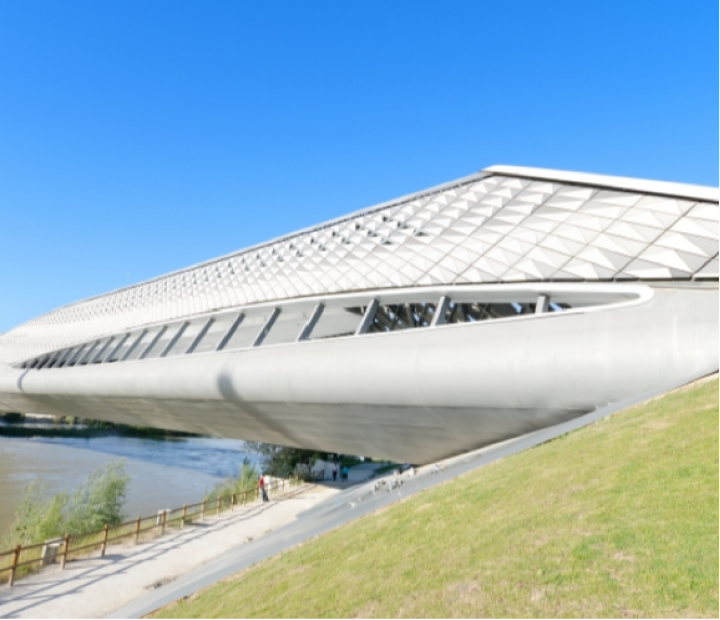
The space
The Zaha Hadid Bridge has a gladiolus-like shape with one narrow end and another wider as it approaches the river’s left bank. Built from steel and fibreglass, the building’s envelope was inspired by a shark’s porous skin, a feature that contributes to the complex’s personality.
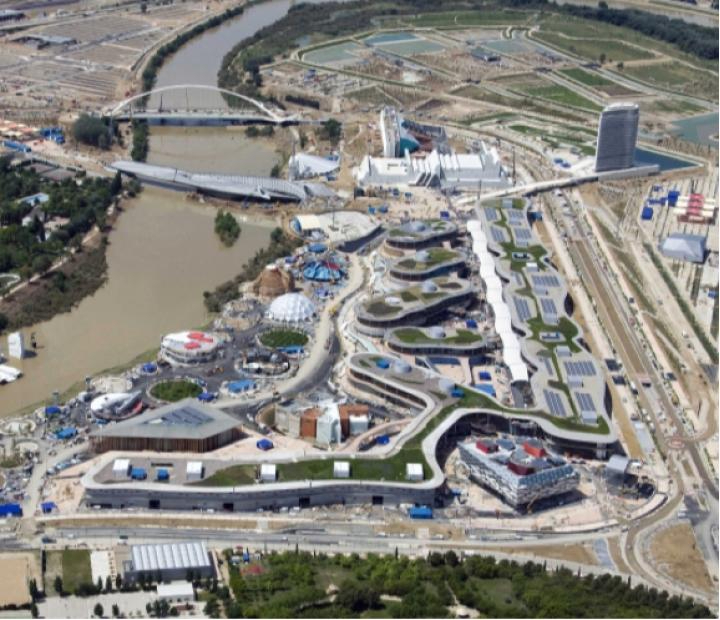
The space
Weighing 7,000 tonnes, the infrastructure is supported on 22 piles, ten of which are positioned on the central island. One of the building’s technical peculiarities is its anchorage, as there is no other building in spain whose central piles reach a depth of 72.5 metres.
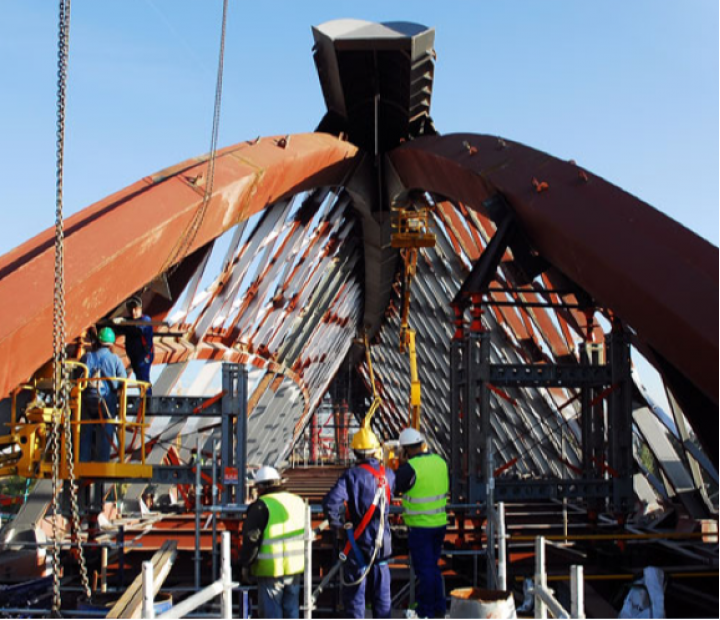
The space
A total of 140 metres of the pavilion structure, weighing 2,200 tonnes, were built away from the riverbed, some 150 metres from the riverbank, before being moved to their definitive position. The move took more than 50 days and involved more than 20 technicians and 150 welders and fitters.
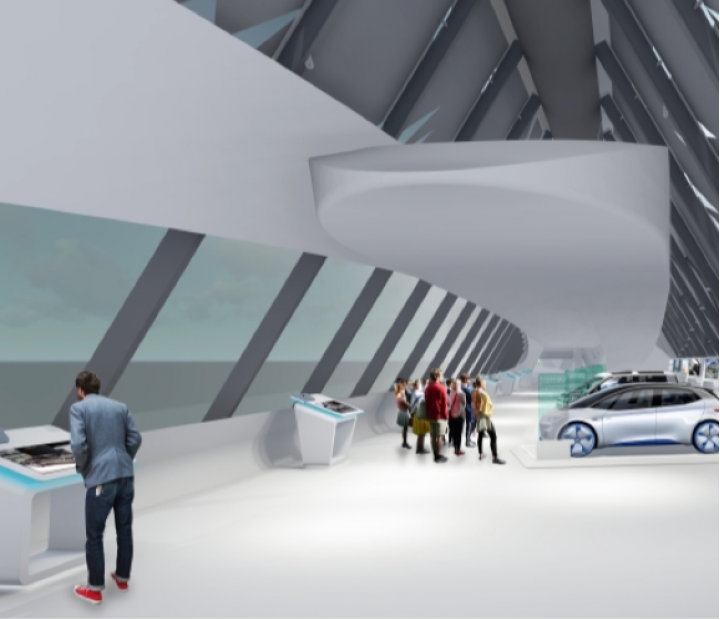
The space
The roll-out of mobility city in the bridge pavilion (Zaha Hadid Bridge) will deliver improvements and facilitate refurbishment works inside the building, after a decade in which it has only been in use as a pedestrian walkway. The Mobility City exhibition area and adjoining rooms to be used for meetings and activities will be located inside the pavilion.

The woman who revolutionised the architecture of the 21st century and placed it at the service of social progress left her mark in Zaragoza by designing a space in the city for innovation and creation, for a future that’s well on its way.
“Her designs embody a framework of modernity that lights the way to a future where everything is yet to be imagined and invented”
Many architects are called upon to create projects that will stand as symbols of a city’s social progress, but very few achieve this as often and as spectacularly as Zaha Hadid did.
The Iraqi-born architect designed this bridge in Zaragoza for the International Expo 2008, which has now become a symbol of modernity for the Aragonese capital and a benchmark for innovation in the mobility sector.
The infrastructure that houses the Mobility City project reflects the optimism for the future and the belief in the power of imagination that Zaha Hadid expressed through her buildings, which can be found in more than 20 countries.
Zaha Hadid’s work seduces the beholder with its beauty and extraordinary mastery of curves, combining cutting-edge design with the latest innovations in materials and construction.
At the same time, her buildings offer generous spaces in which one can move about in an orderly and intuitive way. They are ideal places in which to let one’s imagination and creativity run free.
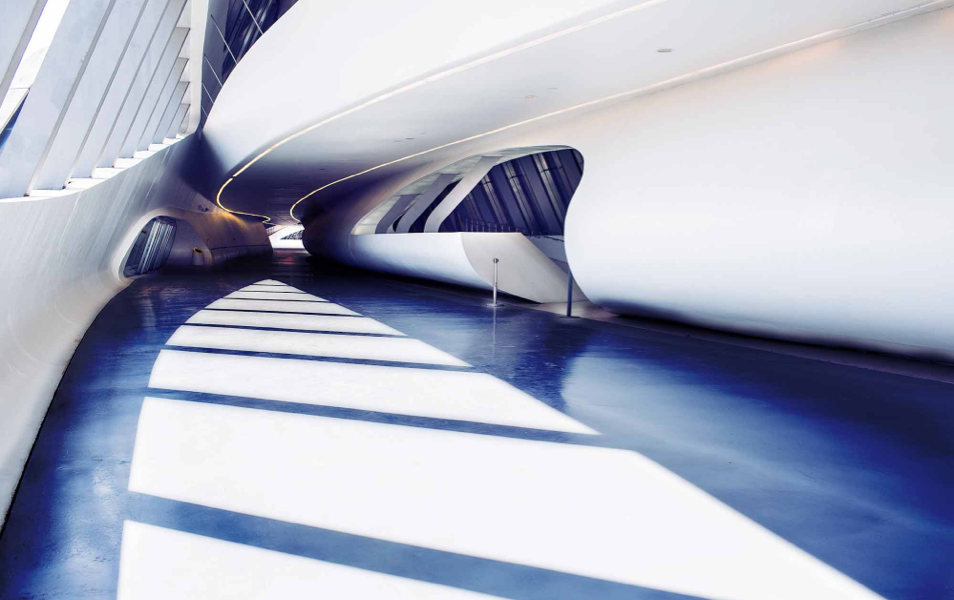
Born in Baghdad in 1950, Zaha Hadid studied mathematics at the American University of Beirut before moving to London in 1972 to attend the Architectural Association School, where she won the Diploma Prize in 1977.
There she began a meteoric career that led her to become the first woman to win the pritzker prize (architecture’s Nobel Prize) in 2004.
Zaha Hadid’s exceptional contribution to architecture has been recognised by academic, professional and civic institutions around the world.
Her designs have been exhibited in venues such as the Guggenheim Museum in New York, the Design Museum in London, the Hermitage Museum in St. Petersburg and the Serpentine Gallery in London.
In 2010 and 2011 her works won the stirling prize, one of the world’s leading architectural awards, from the Royal Institute of British Architecture.
Named by time magazine as one of the 100 most influential people in the world and Thinker of the Year in 2010, the grand dame of architecture passed away on 31 March 2016, leaving behind numerous iconic buildings.
Some of the most important ones are the National Museum of the Arts of the 21st Century (MAXXI) in Rome, the Galaxy Soho in Beijing, the Heydar Aliyev Centre in Baku, the Opera House in Guangzhou, the Pierres Vives Building in Montpellier, the London Aquatics Centre and the Zaha Hadid Bridge (Bridge Pavilion) in Zaragoza.